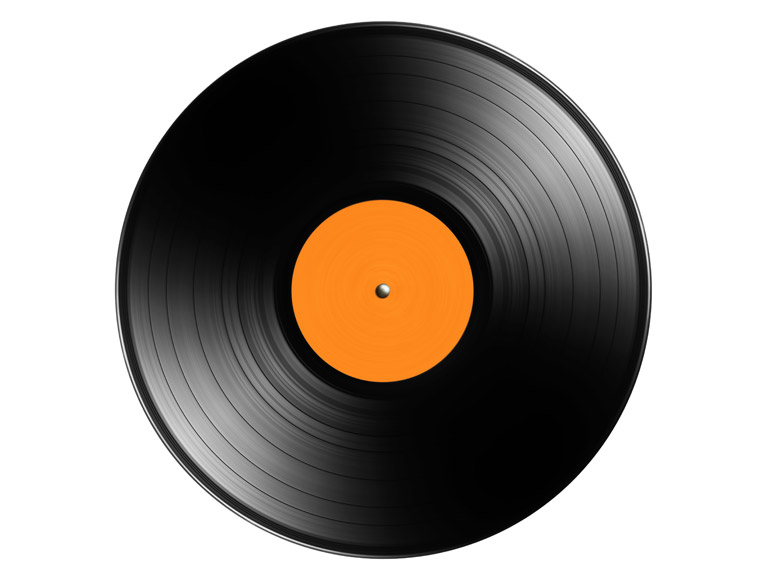
It’s been more than 15 years since the so-called vinyl revival hit the music industry across the world. Nowadays, millions of vinyl records are sold every year with musicians opting for the format more and more. Are you considering releasing your music on vinyl? This article will give you all the information you need about vinyl releases and the industry.
Why you should care about vinyl as an artist
The key reason why you should care about vinyl records as an artist is fans’ general obsession with them. There is something undeniably magical and romantic about vinyl records - from the way they are designed, through the way they are produced, to the way they are consumed. As already mentioned, the general popularity of vinyl has increased dramatically over the past decade. In fact, a total of 43.46 million vinyl records were sold in the U.S. in 2022.
This marks 2022 the 17th consecutive year vinyl album sales grew in the country and, also, the largest year for LP sales since Luminate, the entertainment’s preeminent data and insights company, began tracking data in 1991. Additionally, vinyl LPs made up 43.4% of all albums sold that year across all formats - physical and digital.
How to Introduce Vinyl Records
Now that you comprehend the attributes of LPs, we can proceed to what you must understand to effectively introduce your music on vinyl.
Understand Your Timeline
The substantial demand for vinyl comes with significant challenges, mainly stemming from shortages in vinyl pressing plants and materials. In 2021, Mixmag reported approximately a hundred vinyl pressing plants globally, with only 10 having the capacity for larger record production.
To put this in perspective, the total capacity of existing plants is around 160 million records per year, while the demand is between 320-400 million records. With adequate capacity, the vinyl manufacturing industry could have surpassed the 1978 record of 334 million LPs sold. However, the shortage means independent artists might find it challenging to release their physical music promptly.
The outcome for independent musicians is often prolonged waiting times and major pressing plant delays. What used to be a 10-15 week process can now extend up to a year to get your records pressed. Additionally, estimated production turnover times might not include delays, manufacturing defects, or shipping issues.
Despite these challenges, it doesn't mean you should abandon the idea of a vinyl release. Instead, consider having a schedule to avoid prolonged waits and keep your career on track. Since vinyl requires a separate mastering and production process, scheduling a distinct release date can be beneficial. This way, you can promote your new music before and after the digital release while preparing for the vinyl release.
Master Your Recording Properly
Mastering a vinyl record and a digital recording involve distinct processes due to differences in audiovisual qualities and limitations of each format. While some artists use their digital masters for vinyl-cutting, this can impact the sound quality. It's crucial to have knowledge of mastering for vinyl or enlist a reliable mastering engineer.
Considering issues like volume, distortion, and avoiding excessive stereo bass or sibilant vocals is vital in vinyl mastering. Compression to control dynamics and appropriate sequencing are also essential aspects, as discussed in the next section.
Focus on Sequencing
Album sequencing involves ordering tracks on an album, EP, or mixtape, defining silence between songs, and managing fades-in and fades-out. Unlike digital releases or CDs, you can't skip between tracks on vinyl, so sequencing is critical for a cohesive listening experience.
Place louder songs on the outside of the disc and quieter ones on the inside, as the curvature of vinyl grooving is less angular on the outside, allowing for higher-volume sounds. Consider the overall length of audio on each side, aiming for around 18 minutes to avoid compromising sound quality. Maintain around 30 seconds of quiet runtime between sides for a smoother transition.
Consider All Costs
Releasing music on vinyl entails various costs, including mastering, vinyl type (7", 10", or 12"), recording length, order quantity, vinyl color and weight, and the selected pressing plant. The average minimum price for 100 LPs is around $1000-$1225, but prices vary between orders and pressing plants.
Some manufacturers offer bundle deals, including mastering, stampers, pressing, etc. Others provide pricing lists where you pay for selected services. Additional costs like shipping, handling, packaging, storage, and scrapping fees, along with expenses for vinyl jacket covers, must be considered. Custom vinyl and special components increase costs, so ensure you calculate all expenses before placing an order.
Get Your Artwork Done
Artwork is crucial for vinyl releases due to the format's visual exposure. The size of the record and cover allows for impactful visuals. Use high-resolution images for cover artwork, considering the type of outer sleeve – single sleeves, gatefolds, tri-fold covers, or box sets.
Additionally, think about back and inner sleeves to complement your music with visuals. Showcase art, unique lyrics, or create a distinctive experience for your fans. Remember that while not everyone may listen to the LP, everyone will browse through it. Make the visual aspect an enjoyable and unique experience for your audience.
What’s to Come Next in the Vinyl Music Industry?
Despite the surging interest in vinyl, the vinyl pressing sector appears to be lagging behind. Over the past few years, musician Jack White has consistently urged major record labels – Universal, Warner Brothers, and Sony Music Entertainment – to establish their own pressing plants. This call is aimed at providing independent artists with opportunities to release their music on vinyl.
Despite no discernible response from the major labels, there is a growing trend of smaller pressing plants emerging worldwide. Their objective is to address the substantial demand from both fans and artists. Optimistically, one can hope that it's only a matter of time before the significant industry players join this movement.

